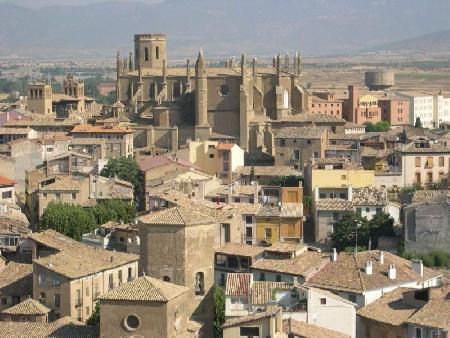 Huesca is the capital of the province of the same name, and is one of the three provinces of the autonomous region of Aragon, Spain. It is the gateway to the Pyrenees, an area rich in Romanesque architecture, ski resorts and impressive landscapes.
Huesca is the capital of the province of the same name, and is one of the three provinces of the autonomous region of Aragon, Spain. It is the gateway to the Pyrenees, an area rich in Romanesque architecture, ski resorts and impressive landscapes.
The city is one of the least populated provincial capitals in Spain, barely exceeding 50,000 inhabitants. Although part of its old town was demolished, it still maintains many interesting buildings of architectural and historical importance. Its Romanesque cathedral stands out, typical of the province. Like many Spanish cities, it has undergone uncontrolled and rapidly growing urbanization in the last fifteen years.
The Cathedral of Huesca:
The elegantly flowery Gothic facade of the Cathedral of Huesca is strangely cut in two by a gallery and a carved wooden canopy that is typical of the Aragon region. The alabaster main altarpiece (1533) is one of Damián Forment's masterpieces
Church and cloister of San Pedro el Viejo:
This former 12th-century monastery owes its reputation to its very fine cloisters, whose historically capitals, although highly restored, are an important testament to Romanesque sculpture in Aragon. They are reached through the church, which has some murals, in particular the painting representing David and Goliath. In a Romanesque chapel, you can also see the tombs of the kings Ramiro II and Alfonso I.
Provincial Museum of Huesca:
The building is made up of eight rooms arranged around an octagonal courtyard. The museum is located in the buildings (1690) of the old University. It contains some collections of archeology and paintings, including a collection of paintings from the early years of Aragon; It is worth noting several works by the Sigena Master from the 16th century.
